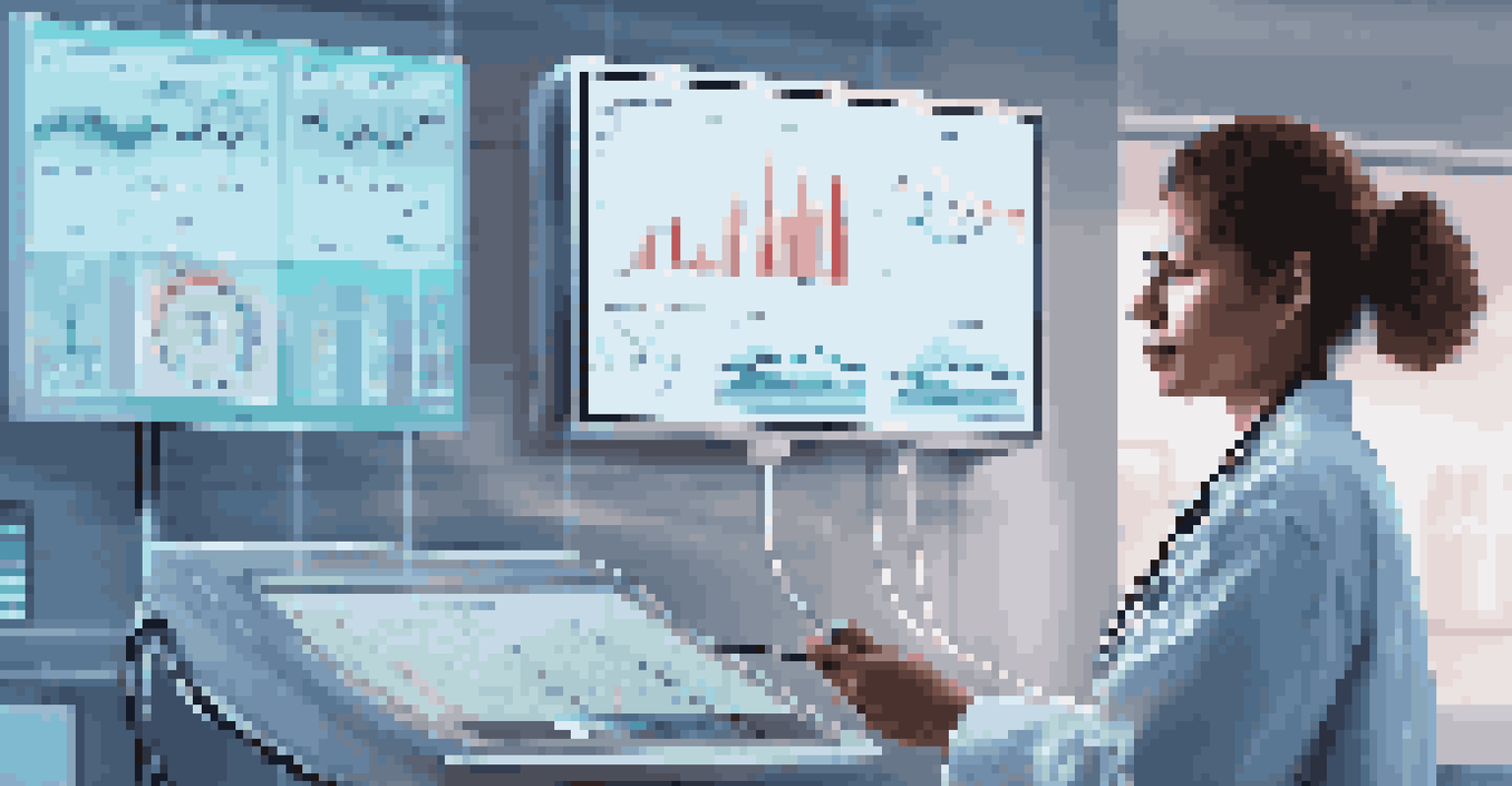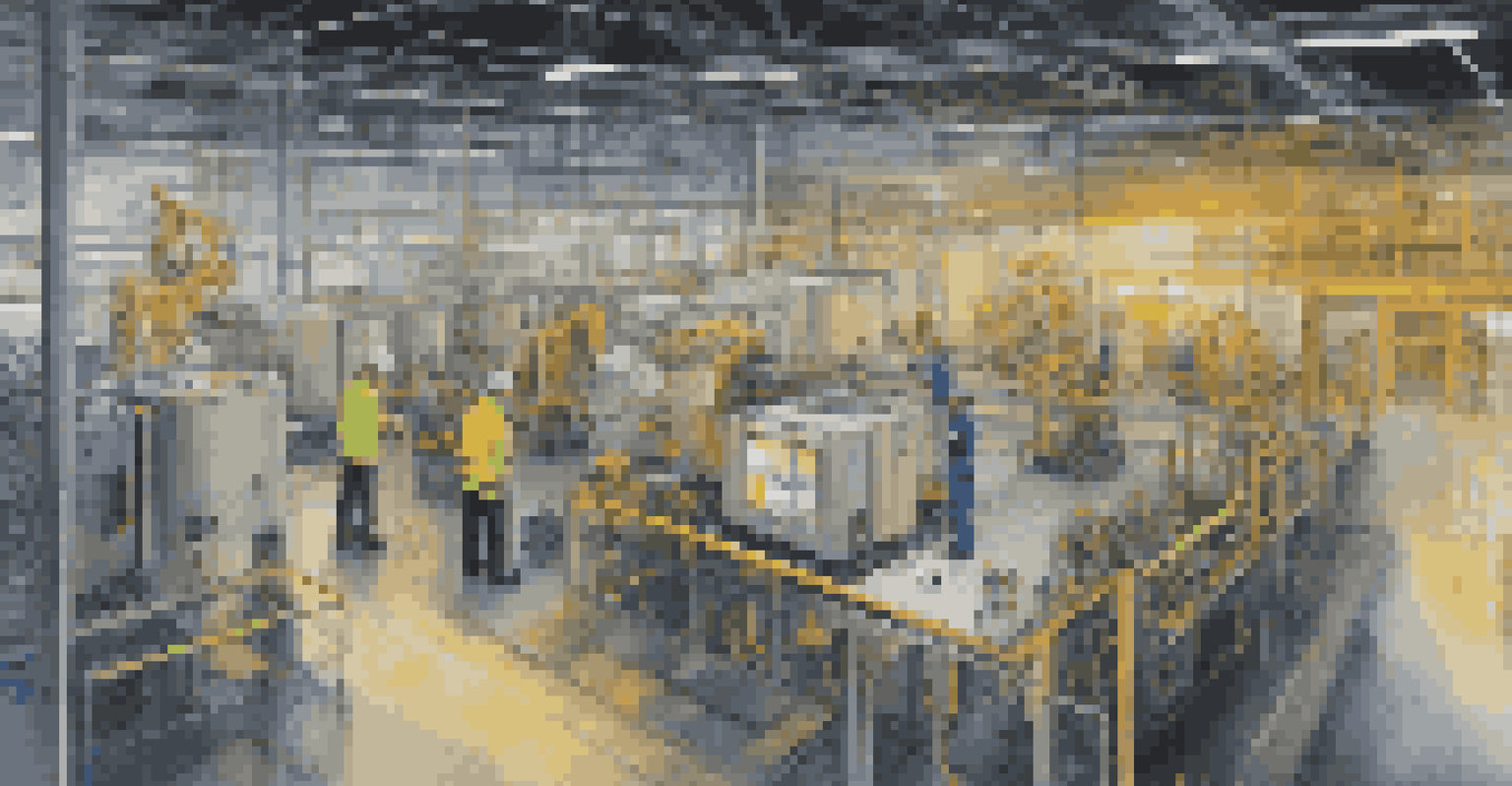The Role of Sensors in Remote Monitoring Applications

Understanding Remote Monitoring and Its Importance
Remote monitoring refers to the process of collecting data from a distance, often using technology to track conditions or performance. This method is crucial across various fields, including healthcare, agriculture, and environmental management. By allowing real-time data collection without the need for physical presence, remote monitoring enhances efficiency and decision-making.
The greatest danger in times of turbulence is not the turbulence; it is to act with yesterday's logic.
Imagine a farmer who can monitor soil moisture levels from the comfort of their home. They receive alerts on their smartphone whenever irrigation is needed, leading to optimal water usage. This not only saves time but also conserves resources, showing how remote monitoring can transform traditional practices.
In healthcare, remote monitoring systems enable doctors to keep track of patients' vital signs without requiring them to visit the clinic. This approach allows for timely interventions and personalized care, proving that the impact of remote monitoring extends far beyond convenience.
The Basics of Sensors: What Are They?
Sensors are devices that detect and measure physical properties, converting them into signals that can be read and analyzed. They play a pivotal role in remote monitoring by gathering data such as temperature, humidity, and motion. Understanding how sensors work is essential to grasping their significance in various applications.

Think of a sensor as a watchful eye that constantly observes its surroundings. For instance, a temperature sensor in a greenhouse helps maintain the optimal environment for plant growth. By providing real-time data, it ensures that conditions remain favorable, demonstrating how sensors support efficiency and productivity.
Remote Monitoring Enhances Efficiency
Remote monitoring allows for real-time data collection and decision-making without physical presence, improving efficiency across various sectors.
In essence, sensors act as the bridge between the physical world and digital data. They enable systems to respond dynamically to changes, making them indispensable components in remote monitoring applications.
Types of Sensors Used in Remote Monitoring
There are various types of sensors tailored for specific monitoring needs. For example, temperature sensors, humidity sensors, pressure sensors, and motion detectors are commonly used across different industries. Each type serves a unique purpose, allowing for comprehensive monitoring of diverse conditions.
In the age of information, ignorance is a choice.
Consider environmental monitoring; air quality sensors can detect pollutants and provide critical data to improve public health. Similarly, in smart homes, motion sensors can enhance security by alerting homeowners to unusual activity. These examples illustrate the versatility of sensors in catering to specific monitoring requirements.
Ultimately, the right sensor choice can significantly impact the effectiveness of remote monitoring systems. By selecting sensors that align with their goals, businesses can optimize their operations and enhance decision-making.
How Sensors Collect and Transmit Data
Sensors collect data through various mechanisms, depending on their type and application. Once data is gathered, it is transmitted to a central system for analysis, often using wireless communication technologies like Wi-Fi, Bluetooth, or cellular networks. This process is crucial for ensuring that information is available in real time.
For instance, a water quality sensor placed in a river can continuously measure parameters like pH and turbidity. It sends this data to a monitoring station, where it can be analyzed to detect pollution levels. This seamless data flow enables quick responses to environmental changes, highlighting the importance of efficient transmission methods.
Sensors Are Key to Data Collection
Sensors detect and measure physical properties, acting as essential tools in gathering data for effective remote monitoring applications.
In summary, the data collection and transmission process is the backbone of remote monitoring systems. It facilitates timely insights that can lead to informed decisions, ultimately enhancing overall effectiveness.
Applications of Sensors in Various Industries
Sensors find applications across numerous industries, each utilizing them to monitor specific conditions. In healthcare, wearable devices equipped with sensors track patients' heart rates and activity levels, providing valuable health insights. This ability to monitor vital signs remotely can lead to improved patient outcomes.
In agriculture, soil moisture sensors help farmers optimize irrigation, ensuring crops receive the right amount of water. By leveraging this technology, farmers can increase yields while conserving resources, illustrating how sensors contribute to sustainability.
Moreover, in industrial settings, sensors monitor equipment performance, predicting maintenance needs. This proactive approach minimizes downtime and reduces operational costs, showcasing the transformative potential of sensors across sectors.
The Benefits of Remote Monitoring with Sensors
Implementing sensors in remote monitoring systems offers numerous benefits, including improved efficiency, cost savings, and enhanced safety. By automating data collection, organizations can reduce manual labor and streamline operations. This not only saves time but also allows staff to focus on more strategic tasks.
Cost savings also come from preventing issues before they escalate. For example, predictive maintenance powered by sensors can identify equipment wear and tear before it leads to costly breakdowns. Such foresight can significantly reduce operational expenses, demonstrating the financial benefits of adopting this technology.
Future Innovations in Sensor Technology
Advancements in sensor technology and IoT integration promise to expand the capabilities and applications of remote monitoring systems.
Furthermore, remote monitoring enhances safety by allowing for continuous surveillance of critical parameters. This is particularly important in hazardous environments, where real-time data can prevent accidents and protect workers, underscoring the value of sensors in promoting safer workplaces.
Challenges and Considerations in Sensor Deployment
Despite their advantages, deploying sensors in remote monitoring applications comes with challenges. Issues such as data privacy, connectivity, and sensor accuracy can impact the effectiveness of these systems. Organizations need to carefully consider these factors to ensure successful implementation.
For instance, ensuring robust data security is crucial, especially in healthcare settings where sensitive patient information is involved. Organizations must adopt stringent measures to protect this data from breaches, illustrating the importance of prioritizing cybersecurity in sensor deployment.

Additionally, maintaining sensor accuracy is vital for reliable data collection. Regular calibration and maintenance are necessary to ensure that sensors continue to provide accurate readings over time, highlighting the need for ongoing support in sensor-based monitoring systems.
The Future of Sensors in Remote Monitoring
The future of sensors in remote monitoring applications looks promising, with advancements in technology paving the way for even greater applications. As IoT (Internet of Things) continues to evolve, the integration of smart sensors in everyday devices will enhance data collection and analysis. This connectivity will lead to more intelligent systems and insights.
Imagine a world where your fridge can monitor food freshness and alert you when something is about to expire. Such innovations are on the horizon, showcasing how sensors can transform daily life and improve efficiency in households and industries alike.
Ultimately, as sensor technology continues to advance, the potential for remote monitoring applications will expand, driving innovation and enhancing our understanding of the world around us. Embracing these changes will allow organizations to stay ahead in an increasingly data-driven landscape.